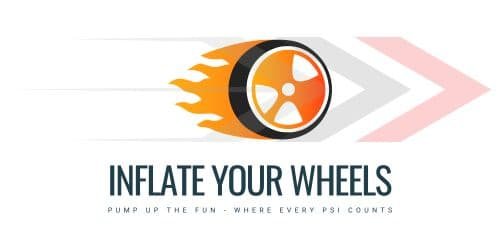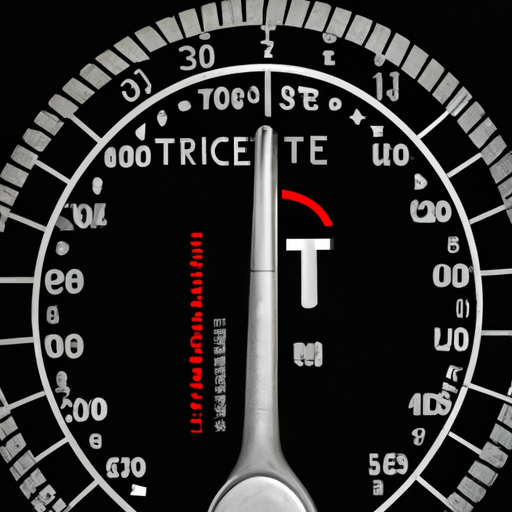Tire pressure is a crucial aspect of maintaining a smooth and safe ride, but the question of whether it should be warm or cold often leaves drivers puzzled. The ideal tire pressure can be influenced by temperature changes, which can make it difficult to determine the ideal time for checking and adjusting it. In this article, we explore the factors that come into play when it comes to tire pressure and whether it should be warm or cold, providing you with the knowledge to make informed decisions for a smooth and safe journey.
Should Tire Pressure Be Warm Or Cold?
Table of Contents
The Importance of Proper Tire Pressure
Ensuring that your tires are properly inflated is crucial for both the safety and performance of your vehicle. Tire pressure plays a significant role in a variety of factors, including handling, fuel efficiency, and tire lifespan. When tire pressure is incorrect, it can have detrimental effects on these aspects, leading to potential safety hazards and increased costs in the long run. Therefore, it is essential to understand the effects of incorrect tire pressure and the role that temperature plays in maintaining optimal tire pressure.
Effects of Incorrect Tire Pressure
Incorrect tire pressure can have various negative effects on both your vehicle and your driving experience. When the tire pressure is too low, also known as underinflation, the tire’s contact patch with the road increases. This can result in reduced handling and control, as well as increased rolling resistance. Underinflated tires also tend to wear out faster, leading to a shorter tire lifespan and the need for more frequent replacements.
On the other hand, overinflated tires, where the tire pressure is too high, can also have adverse effects. Overinflation reduces the tire’s contact patch, leading to compromised traction and reduced braking efficiency. This can be particularly dangerous in wet or icy conditions, where proper traction is crucial for maintaining control of the vehicle. Overinflated tires are also more susceptible to damage from road hazards, such as potholes or debris, as they have a smaller buffer zone between the tire and the road surface.
The Role of Temperature in Tire Pressure
Temperature has a significant impact on tire pressure. It is important to understand how temperature fluctuations can cause changes in tire pressure and how to properly maintain it under different conditions.
Determining the Ideal Tire Pressure
To ensure that your tires are properly inflated, it is essential to consult the manufacturer’s recommendations for your specific vehicle. These recommendations can usually be found in the owner’s manual or on a sticker located on the driver’s side door jamb or inside the fuel door.
In addition to the manufacturer’s recommendations, it is important to consider the load and speed rating of your tires. The load rating indicates the maximum weight that the tire can support, while the speed rating indicates the maximum speed that the tire can safely handle. Both of these factors play a role in determining the ideal tire pressure.
Temperature is another crucial consideration when determining the ideal tire pressure. As the temperature changes, the tire pressure can fluctuate, affecting the overall performance and safety of your vehicle.
Understanding the Effects of Heat on Tire Pressure
When the temperature increases, the air molecules inside the tire expand. This expansion leads to an increase in tire pressure. It is important to note that this increase in pressure is not solely due to the expansion of the air itself but also to the increased kinetic energy of the air molecules. As a result, the tire pressure can rise significantly, potentially leading to overinflation.
Overinflated tires can be dangerous as they have a smaller contact patch with the road. This reduces traction and can compromise your ability to control the vehicle, especially during emergency maneuvers or in adverse weather conditions. Overinflated tires are also more prone to damage, as the increased pressure makes them more susceptible to punctures or blowouts.
Effects of Cold Temperatures on Tire Pressure
Conversely, when the temperature decreases, the air molecules inside the tire contract. This contraction leads to a decrease in tire pressure. Cold temperatures can cause tires to become significantly underinflated, which can have its own set of consequences.
Underinflated tires have a larger contact patch with the road, resulting in increased rolling resistance. This can lead to reduced fuel efficiency and increased tire wear. Underinflated tires also have reduced handling and control, particularly in wet or icy conditions, where proper traction is essential. Additionally, underinflation can cause tire overheating, which may lead to premature tire failure.
Measuring Tire Pressure in Different Conditions
To accurately measure tire pressure, it is best to check it when the tires are cold. This means that the vehicle has not been driven for at least a few hours or has only been driven for a short distance at low speeds. Checking tire pressure when the tires are cold provides a baseline measurement that is not affected by the heat generated during driving.
However, it is important to consider the impact of temperature changes on tire pressure. As the temperature fluctuates, tire pressure can change, even if the tires are initially inflated to the proper pressure. It is essential to adjust the tire pressure accordingly to ensure optimal performance and safety.
Recommendations for Maintaining Proper Tire Pressure
Regularly checking your tire pressure is crucial for maintaining proper inflation. It is recommended to check the tire pressure at least once a month and before long trips. By doing so, you can identify any potential issues early on and take the necessary steps to address them.
When checking tire pressure, it is important to consider temperature fluctuations. If the temperature has changed significantly since the last measurement, it is advisable to adjust the tire pressure accordingly. This will ensure that your tires remain properly inflated under different conditions.
If you are unsure about how to check or adjust the tire pressure correctly, it is always best to seek professional advice. Automotive technicians or tire experts can assist you in determining the ideal tire pressure for your vehicle and provide guidance on proper maintenance.
Factors Affecting Tire Pressure
Several factors can affect tire pressure, aside from temperature fluctuations. Driving conditions play a significant role in tire pressure, as aggressive driving or driving on rough terrain can increase the likelihood of air leakage or damage to the tires. It is important to drive responsibly and avoid road hazards to maintain proper tire pressure.
The age and wear of the tires themselves can also impact tire pressure. As tires age, they can become more susceptible to leaks or damage, which can cause loss of air pressure over time. Regularly inspecting your tires for any signs of wear or damage is essential for maintaining proper inflation.
Air leakage is another factor that can affect tire pressure. Even with proper maintenance, tires can experience slow leaks over time. It is important to regularly check for leaks and address them promptly to ensure that your tires maintain optimal pressure.
The Role of Proper Tire Pressure in Safety and Performance
Maintaining proper tire pressure is not just a matter of convenience; it is crucial for your safety and the performance of your vehicle. Properly inflated tires contribute to enhanced handling and control, allowing you to maneuver your vehicle with confidence. They also provide optimal traction, especially in adverse weather conditions, reducing the risk of accidents.
Proper tire pressure also plays a role in fuel efficiency. Underinflated tires increase rolling resistance, which requires more energy from your engine to maintain the same speed. This can result in decreased fuel efficiency and increased fuel consumption. On the other hand, overinflated tires can reduce fuel efficiency by compromising the vehicle’s overall performance and increasing the workload on the engine.
In addition to safety and fuel efficiency, proper tire pressure also extends the lifespan of your tires. When tires are inflated to the correct pressure, they wear more evenly and last longer. This means that you can get more miles out of your tires before needing to replace them, saving you money in the long run.
Common Myths and Misconceptions about Tire Pressure
There are several common myths and misconceptions surrounding tire pressure. One such myth is the concept of “hot-tire inflation,” which suggests that one should inflate their tires when they are warm for a more accurate measurement. However, it is important to measure tire pressure when the tires are cold, as heat can significantly affect the pressure readings.
Another misconception is that overinflating tires can improve fuel efficiency. While it is true that underinflated tires can decrease fuel efficiency, overinflating them is not a solution. Overinflated tires can compromise handling and control, increasing the risk of accidents. It is important to maintain the recommended tire pressure for your vehicle to achieve optimal fuel efficiency and safe driving.
Lastly, ignoring minor pressure loss is a common mistake. It is crucial to address any pressure loss promptly. Even minor changes in tire pressure can affect the performance and safety of your vehicle. Regularly monitoring and maintaining proper tire pressure is essential for optimal driving conditions.
Conclusion
Proper tire pressure is of utmost importance for the safety, performance, and longevity of your vehicle. Understanding the effects of temperature on tire pressure and following manufacturer’s recommendations will help ensure that your tires are correctly inflated. By regularly checking and adjusting tire pressure, you can enhance handling, improve fuel efficiency, and extend the lifespan of your tires. Don’t fall victim to common myths or overlook minor pressure loss; prioritize proper tire pressure for a safer and more enjoyable driving experience.


Keep your car tires in peak condition with the right inflator.
Discovering the best tire inflator can be a game-changer for maintaining your vehicle. Explore our comprehensive Ultimate Guide to the Best Tire Inflators to make an informed decision.

